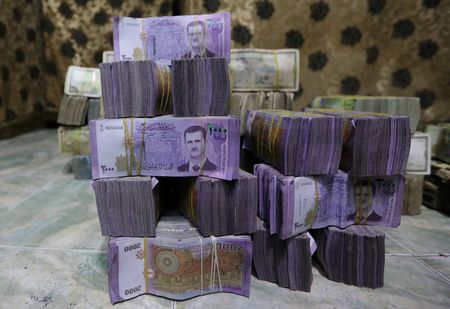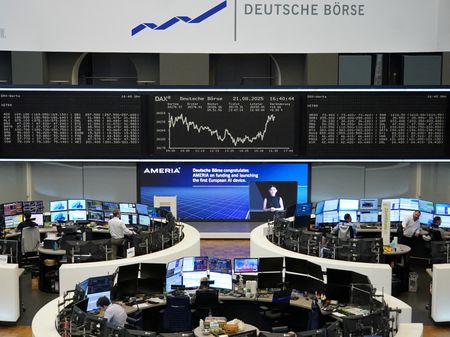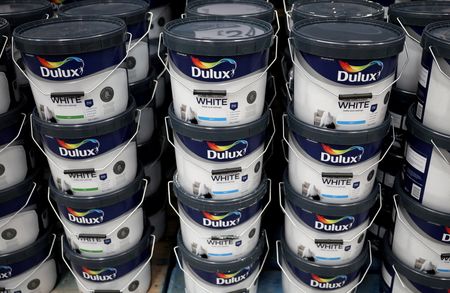By Maria Martinez
BERLIN (Reuters) -Germany’s economy shrank by 0.3% in the second quarter compared with the first three months of the year, as demand from its top trading partner the United States slowed following months of buying ahead in anticipation of U.S. tariffs.
The statistics office revised on Friday its preliminary reading of a 0.1% contraction, further dimming expectations of a sustained recovery by Europe’s biggest economy this year.
“It looks increasingly unlikely that any substantial recovery will materialise before 2026,” said Carsten Brzeski, global head of macroeconomics at ING.
Germany was the only member of the G7 advanced economies that failed to grow for the last two years and trade tensions could put it on track for a third year of recession for the first time in post-war German history.
Reviving the economy is a top priority for Germany’s new government, especially given fears U.S. President Donald Trump’s tariffs could cause further pain for the export-driven economy. A baseline U.S. tariff of 10% came into effect on April 5.
The German government has approved an “investment booster”, which offers improved depreciation options for companies, and promised extra defence and infrastructure spending as well as a reduction in corporation tax.
Further measures will be necessary, the Economy Ministry said.
“What has been decided so far is not enough, more is needed to make Germany competitive again and put it back on track for growth,” a ministry spokesperson told Reuters when asked to comment on Friday’s data.
EXPORTS FALL 0.1%
Industrial production, in particular, performed worse than initially assumed, the statistics office said.
Household consumption in the second quarter was revised downwards to a 0.1% increase due to new information available on the services sectors, such as monthly statistics of accommodation and food services for June.
Government spending increased by 0.8% on the previous quarter, the statistics office said. Investment decreased significantly in the second quarter, sliding 1.4%.
No positive contributions came from foreign trade either. In the second quarter, total exports of goods and services were down 0.1% from the previous quarter.
The EU and the U.S. struck a framework trade deal in late July but only the baseline tariff of 15% has so far been implemented. The EU is still waiting for the White House to issue executive orders to cover carve-outs, such as on the automotive industry.
The U.S. was Germany’s biggest trading partner in 2024, with two-way goods trade of 253 billion euros ($293 billion).
In some brighter economic news, the private sector saw a slight uptick in growth in August, driven by manufacturing, which experienced a rise in orders, the HCOB Flash Germany Composite Purchasing Managers Index showed on Thursday.
The economy will pick up in the coming quarters in view of the European Central Bank’s interest rate cuts and a significantly more expansionary fiscal policy, said Ralph Solveen, senior economist at Commerzbank.
“However, this upturn is likely to be only moderate due to the structural problems of the German economy and the significantly higher U.S. tariffs,” Solveen said. ($1 = 0.8628 euros)
(Additional reporting by Rachel MoreEditing by Ludwig Burger and Helen Popper)










